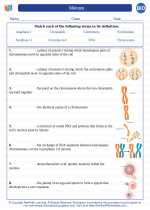Bone
Structure and Function
Bones are the rigid organs that make up the skeletal system of vertebrates. They provide support and protection for the body's organs, enable movement, and produce blood cells. The human body has 206 bones, which can be categorized into five types: long, short, flat, irregular, and sesamoid.
Composition of Bone Tissue
Bone tissue is composed of two main types of bone: cortical (compact) bone and trabecular (spongy) bone. The outer layer of bones is made up of compact bone, while the inner layer consists of spongy bone, which contains red bone marrow responsible for blood cell production.
Functions of Bone
- Support: Bones provide a framework for the body and support soft tissues.
- Protection: Bones protect vital organs such as the brain, heart, and lungs.
- Movement: Bones act as levers for muscles to produce movement.
- Storage: Bones store minerals such as calcium and phosphorus.
- Blood Cell Production: Bone marrow produces red and white blood cells, as well as platelets.
Bone Cells
There are several types of cells that contribute to bone formation, maintenance, and remodeling. These include osteoblasts (bone-forming cells), osteocytes (mature bone cells), and osteoclasts (bone-resorbing cells).
Common Bone Disorders
Some common bone disorders include osteoporosis, a condition characterized by weakened and brittle bones; osteoarthritis, a degenerative joint disease; and fractures, which are breaks in the bone structure.
Study Guide
To study the topic of bone, it is important to understand the structure and function of bones, as well as the various types of bone tissue. Familiarize yourself with the functions of bones in the human body, including support, protection, movement, storage, and blood cell production. Additionally, learn about the different types of bone cells and their roles in bone formation and maintenance. Finally, make sure to review common bone disorders and their characteristics.
.◂Biology Worksheets and Study Guides High School. Meiosis

 Worksheet/Answer key
Worksheet/Answer key
 Worksheet/Answer key
Worksheet/Answer key
 Vocabulary/Answer key
Vocabulary/Answer key
 Vocabulary/Answer key
Vocabulary/Answer key
 Vocabulary/Answer key
Vocabulary/Answer key
